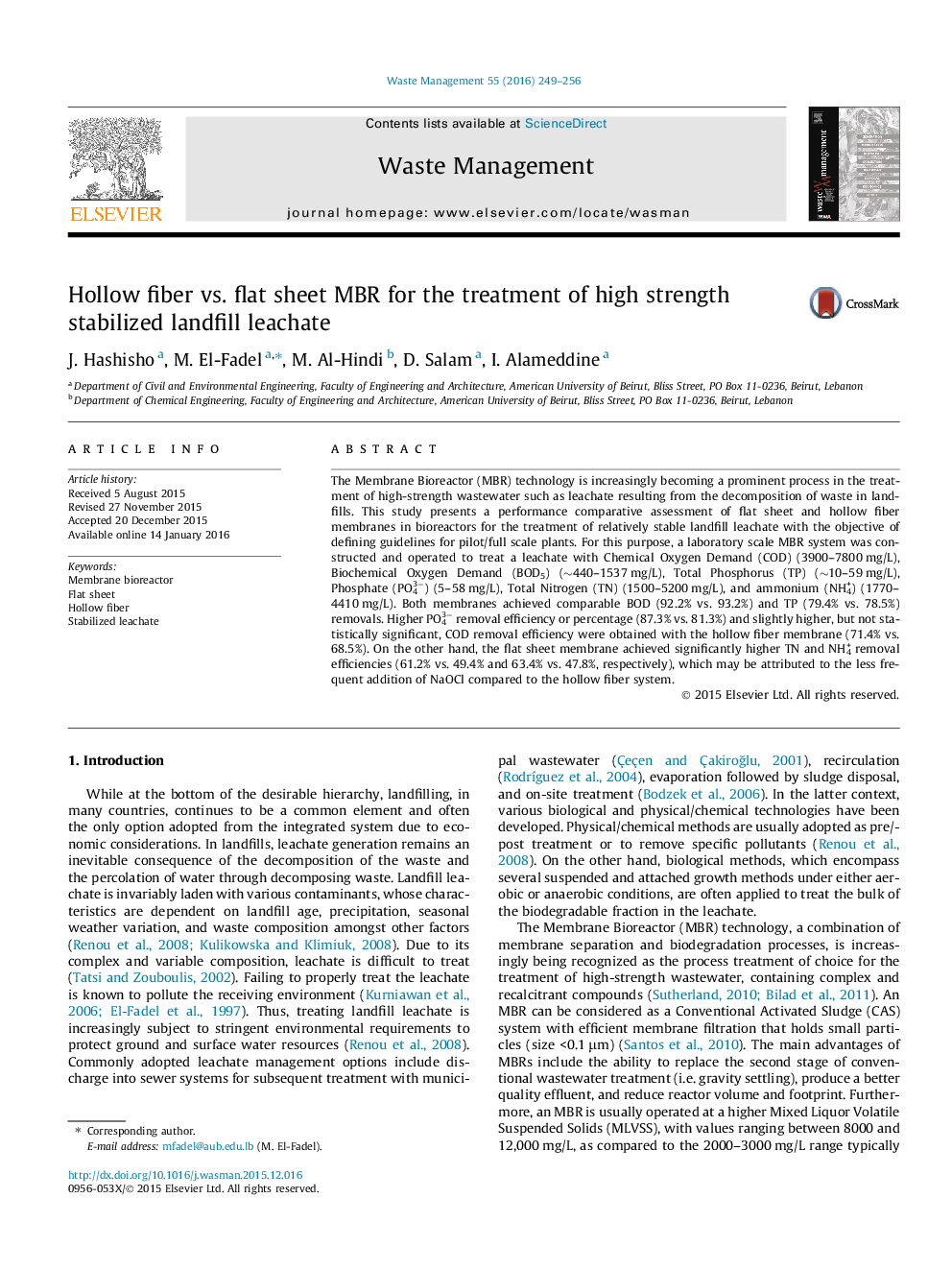| کد مقاله | کد نشریه | سال انتشار | مقاله انگلیسی | نسخه تمام متن |
|---|---|---|---|---|
| 4471200 | 1622631 | 2016 | 8 صفحه PDF | دانلود رایگان |
• Flat Sheet (FS) and Hollow Fiber (HF) membrane bioreactors for landfill leachate treatment.
• Comparable BOD and TP removal rates obtained with FS and HF.
• FS exhibited higher TN and NH3 removal rates.
• Higher PO43− removal rate achieved with the HF.
• Slightly higher COD removal rate recorded with HF but not statistically significant.
The Membrane Bioreactor (MBR) technology is increasingly becoming a prominent process in the treatment of high-strength wastewater such as leachate resulting from the decomposition of waste in landfills. This study presents a performance comparative assessment of flat sheet and hollow fiber membranes in bioreactors for the treatment of relatively stable landfill leachate with the objective of defining guidelines for pilot/full scale plants. For this purpose, a laboratory scale MBR system was constructed and operated to treat a leachate with Chemical Oxygen Demand (COD) (3900–7800 mg/L), Biochemical Oxygen Demand (BOD5) (∼440–1537 mg/L), Total Phosphorus (TP) (∼10–59 mg/L), Phosphate (PO43−) (5–58 mg/L), Total Nitrogen (TN) (1500–5200 mg/L), and ammonium (NH4+) (1770–4410 mg/L). Both membranes achieved comparable BOD (92.2% vs. 93.2%) and TP (79.4% vs. 78.5%) removals. Higher PO43− removal efficiency or percentage (87.3% vs. 81.3%) and slightly higher, but not statistically significant, COD removal efficiency were obtained with the hollow fiber membrane (71.4% vs. 68.5%). On the other hand, the flat sheet membrane achieved significantly higher TN and NH4+ removal efficiencies (61.2% vs. 49.4% and 63.4% vs. 47.8%, respectively), which may be attributed to the less frequent addition of NaOCl compared to the hollow fiber system.
Journal: Waste Management - Volume 55, September 2016, Pages 249–256
